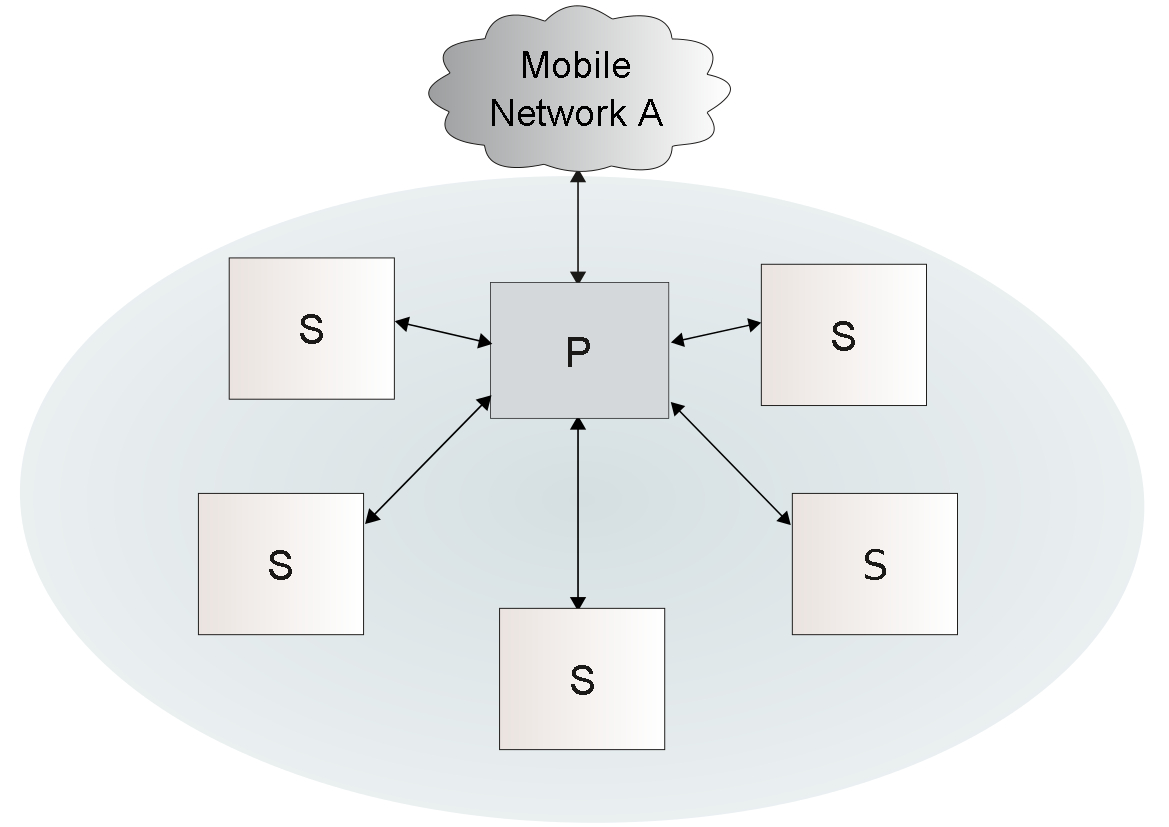Multiple cluster node support
Multiple SafeLinx Server can be configured as a cluster to distribute the workload in a multi-node configuration. In addition to the full exploitation of multiprocessor capabilities, the SafeLinx Server's cluster support enhances scalability. The cluster support also adds a dynamic workload-sharing and balancing facility with a physical cluster.
You can group subordinate nodes together and assign a principal node that dispatches traffic to specific nodes within the cluster group. Subordinate nodes can be added to a cluster group dynamically to increase the capacity of the cluster.

The preceding figure shows a scenario of SafeLinx Server that are configured to distribute the workload. Each box in the figure represents a SafeLinx Server that is configured as either a subordinate node (labeled S) or a principal node (labeled P).
The principal node is a SafeLinx Server that is configured to receive traffic from a mobile network connection and distribute the workload among its subordinate nodes. The subordinate nodes are configured to accept and process traffic from the principal node based on a configurable distribution algorithm. To provide backup for the principal node, High Availability Cluster Multi-Processing (HACMP™) can be used with a second computer. It is not necessary to back up the subordinate nodes.